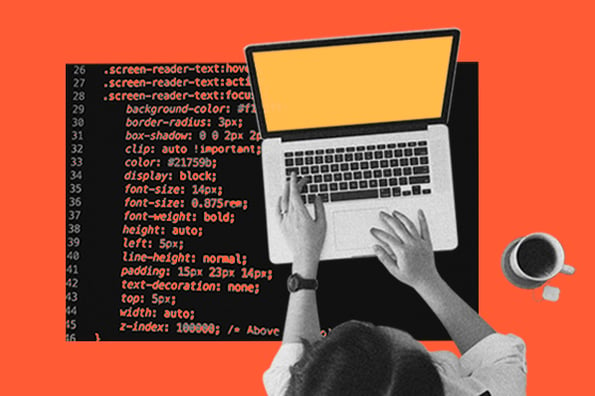Elevate Your Online Visibility With Magnificent Internet Layout Tips and Trends
In today's electronic landscape, a compelling on-line presence is crucial for organizations looking for to distinguish themselves from the competitors. The interaction of visual allure, existing layout patterns, and individual experience plays an essential function in attaining this objective. By discovering elements such as minimalism, vibrant typography, and vivid color design, you can create an engaging atmosphere that resonates with site visitors. However, the nuances of reliable layout expand beyond aesthetics; understanding crucial approaches for optimization can substantially impact your success. What details fads and methods can elevate your site to new elevations?
Relevance of Visual Appeal
This figure emphasizes the important duty that aesthetics play in individual interaction and retention. Reliable aesthetic design encompasses aspects such as color schemes, imagery, typography, and format, all of which contribute to a attractive and cohesive customer experience.
Additionally, a visually enticing site imparts a sense of reputation and expertise. Individuals are much more most likely to rely on a website that looks sleek and well-structured, which can substantially affect conversion prices. Alternatively, a unpleasant or messy layout can cause high bounce rates, as individuals might view the website as untrustworthy or obsolete.
Furthermore, the aesthetic facets of a website can share brand name identification and worths (Web design). Regular use of branding elements, such as logo designs and color combinations, enhances acknowledgment and cultivates a deeper link with the audience. To conclude, focusing on aesthetic charm is important for developing appealing, reliable, and brand-aligned online experiences that resonate with individuals
Present Style Trends
Modern website design is continuously advancing, and remaining updated with current fads is crucial for producing impactful on-line experiences. One popular trend is the rise of minimalism, defined by clean lines, enough white room, and a concentrate on necessary components. This approach not just enhances functionality however also permits web content to take spotlight.
Furthermore, dark setting user interfaces have actually gained appeal, supplying individuals with an aesthetically striking option while minimizing eye strain. This fad straightens well with customer preferences, using a contemporary aesthetic that is both elegant and practical.
Another noteworthy pattern is the incorporation of vibrant typography. Designers are progressively using big, meaningful typefaces to develop visual hierarchy and share brand messages effectively. Combined with dynamic shade palettes, this pattern includes dynamism to website.

Essential Design Elements
Efficient website design depends upon numerous vital style components that with each other develop a engaging and natural user experience. The first of these aspects is design, which dictates just how material is organized on the web page. A well-structured layout not only improves readability but also guides customers with the website seamlessly.
Shade plays a crucial function in a fantastic read layout, influencing emotions and brand name understanding. An unified color scheme can evoke specific feelings and establish a visual pecking order, therefore accentuating key components. Typography is vital; the option of font styles have to line up with the brand identity and ensure legibility across gadgets.
In addition, whitespace is commonly neglected however is crucial for producing balance. It assists stop clutter, allowing customers to focus on the vital components without interruption.
Last but not least, consistency throughout all style elements enhances brand identity and makes navigating instinctive. By meticulously including these crucial style components, web developers can produce visually attractive and useful internet sites that astound visitors and urge interaction.
User Experience Optimization
A seamless user experience is vital for preserving visitors and driving conversions on a web site. Maximizing user experience (UX) includes understanding your target market and tailoring layout elements to satisfy their requirements effectively. Key components of UX optimization consist of user-friendly navigating, quick filling times, and clear calls to activity.
Include breadcrumb routes to help users quickly backtrack, lessening aggravation. Speed is an additional crucial element; websites must fill within three seconds to avoid customers from abandoning the website.
In addition, your internet site's design must focus on clarity. Usage understandable font styles, contrasting shades, and whitespace to develop an aesthetically appealing design that guides customers via content effortlessly. Phone call to activity ought to be plainly shown, making use of actionable language that motivates users to engage.
Mobile Responsiveness Approaches
Virtually fifty percent of all web traffic currently originates from mobile phones, highlighting the relevance of implementing robust mobile responsiveness strategies. To make certain ideal customer experience across numerous display sizes, web developers should embrace a liquid grid layout that adjusts seamlessly to different tools. This approach allows content to resize and rearrange without compromising functionality or visual appeals.
Including versatile photos and media inquiries is crucial. Photos need to immediately change their dimension according to the viewport, while media questions can identify device qualities and apply tailored CSS designs appropriately. This technique enhances tons times and guarantees that customers have an aesthetically attractive experience.
Additionally, focus on touch-friendly navigating components. Buttons and web links must be quickly tappable, with ample spacing to prevent misclicks. Staying clear of hover-dependent communications even more improves usability on touchscreens.
Lastly, performing normal screening across numerous gadgets and web browsers is vital. why not try here Tools like Google's Mobile-Friendly Test can assist identify locations requiring enhancement. By adopting these mobile responsiveness approaches, organizations can improve customer involvement, increase search engine rankings, and ultimately drive conversions, consequently boosting their on the internet visibility successfully.
Final Thought
By prioritizing visual allure with present design patterns and necessary elements, organizations can cultivate reputation and engagement. Optimizing customer experience and making certain mobile responsiveness are important for promoting seamless interaction throughout devices.

Conversely, a unappealing Full Report or cluttered layout can lead to high bounce rates, as individuals may regard the site as untrustworthy or outdated. - Web design
Efficient internet design hinges on a number of crucial layout elements that with each other develop a appealing and natural user experience. Enhancing customer experience (UX) entails recognizing your audience and customizing style aspects to fulfill their demands properly.